Copywriting is different from content writing in that it’s usually short-form and debuts towards the bottom of the marketing funnel. Unlike content writing, you want to do more than inform your readers–you want them to act.
But writing landing page content is its own skill; it isn’t as intuitive as writing blog content, where your main purpose is often to inform and educate.
To write good website copy, you need to immerse yourself in the buyer’s journey. You need to understand where they are in the decision-making process in order to write content that resonates.
Good copy can sell customers on a product;
great copy sells a customer on the company.
You don’t have to be an expert writer to write copy that converts. But you do need to know who you’re talking to and what they’re thinking—which is far easier said than done. So I’ve compiled a list of examples to make it easy to see the difference between good and not-so-good website copy.
Without further ado, here’s what you need to know to write copy that converts!
Table of Contents
- What is Conversion Copywriting?
- How to Write Copy That Converts
- 3 Examples of Quality Website Copy
- Final Tips for Strong Copywriting
What is Conversion Copywriting?
Before we get too into the weeds, let me take a minute to define what we’re trying to accomplish with landing page content.
Landing page content is meant to direct users to the next stage of the marketing funnel–whether that’s another page on your site, a subscription form, a product page, etc.
The content on each landing page is usually compelling, interesting and asking the reader (directly or indirectly) to take a specific action. That’s conversion copywriting.
Here’s an example from Hubspot’s blog on landing page examples.
This is the current copy:
Become a Dog Walker with Wag!
Join our community of over 351K pet caregivers nationwide.
While the copy is okay, I immediately notice that the benefits aren’t clearly stated here. Why would someone want to become a dog walker with Wag? Joining a community may not be a compelling enough reason. I imagine that people looking to join may be more interested in the pay and flexibility, for example.
If I were to rewrite this, I would write:
Imagine the paw-sibilities
Flexible schedules, extra cash and playtime with your favorite furry friends? We can’t think of anything better. Join a community of people who love dogs as much as you do!
I added a few extra words re-frame this page to be a more personal interaction with the reader. But how did I know what to change about the original copy? That’s exactly what I’ll cover next.
How to Write Copy That Converts
The key to writing copy that converts is understanding what your audience wants and needs to hear at each stage of the buyer’s journey.
I’ve seen many business websites with essentially the same information on each page with maybe a few minor tweaks to address a different service or product offering.
This leaves a lot of opportunity on the table because good, unique copy on each page delivers fresh value to your site visitors. It’s that value that keeps people on your site instead of driving them away to check out your competitors.
Here are some things you absolutely must do to write persuasively for your website.
1. Get to Know Your Brand
As the saying goes, write what you know. Writers can underestimate the value of research and understanding a brand truly, madly and deeply. You won’t write compelling copy with a surface-level understanding of your company.
Here are some questions to consider when getting to know your brand:
- Who is your audience?
- What problem does your product or service solve?
- What are the features and benefits of your product or service?
- What makes your product or service unique?
- How does your product or service benefit the customer?
- What is your company’s voice? (formal, casual, etc.)
Answering these questions will give you a solid foundation to start writing copy that converts.
2. Determine the Goal of the Page
If you grew up loving writing (as many of us have), it’s easy to get lost in writing the perfect sentence or using flowery language that sounds great to us.
As any copywriter worth their salt knows, copy isn’t supposed to sound good to you–it’s supposed to sound good to the person reading it.
Here are a few questions I think through to make sure I’m keeping the goal of the page at the forefront of my writing.
- Who is the target audience for this page?
- Consider your company’s UVPs (unique value propositions) and whether they are (or should be) represented on the page. These are the points that communicate what makes your product or service different and better than the competition.
- What is the purpose of this page?
- If the goal of the page is to sell a product or service, learn everything you can about the product or service so you can write about it in detail.
- If the goal is to acquire newsletter signups, state what type of content people can expect if they sign up for your newsletter.
- What action do you want people to take on this page?
- If you want people to buy a product, make it easy for them to do so. If you want people to connect with your business for a service consultation, have a clear and concise call-to-action (CTA) that leads them to a contact form.
- Do site visitors need social proof at this stage?
- If you’re collecting reviews, use them! Add them to webpages for that element of social proof that helps boost your conversion rate.
3. Understand Your Target Audience
To write copy that converts, you need to understand your company's mission, values and buyer personas to deliver a relevant message. Here are some important points to consider:
- Needs
- Your copy should be focused on how your product or service meets your customers’ needs.
- Pain Points
- At the end of the day, people are buying goods and services to solve a problem. Name that problem in your copy in a way that’s relatable and makes an immediate impact on your audience.
- Values
- Does your average customer value sustainable materials or fair labor practices? Do they care about connecting with their family or climbing up the corporate ladder? Appealing to a potential buyer’s values is the key to writing great copy. People who feel seen are more likely to buy into your message.
- Social Proof
- Sometimes, a review or testimonial from a customer will work just as well (if not better) than anything a copywriter can create. Trust signals from other customers and reputable brands are crucial.
4. Understand the Buyer’s Journey
The buyer’s journey is the process people go through when they’re considering a purchase. There are three stages to the buyer’s journey:
- Awareness: The customer is aware they have a problem or need
- Consideration: The customer is researching solutions to their problem or need
- Decision: The customer has decided on a solution to their problem or need.
Your copy should be tailored to each stage of the buyer’s journey.
Awareness Stage: In the awareness stage, your copy should focus on educating potential customers about their issue and how your product or service can help.
Consideration Stage: In the consideration stage, your goal is to position your product or service as the best solution to their problem or need. Your copy should highlight the features and benefits of your product or service and how it’s better than the competition.
Decision Stage: In the decision stage, your goal is to get potential customers to take action and purchase your product or service. Your copy should include a strong call-to-action (CTA) that leads them to a purchase page or sign-up form.
Read more about how to create a product page that converts.
5. Use a CTA That Resonates With Your Audience
Your CTA is one of the most important elements of your copy. It’s what you want your audience to do after they’ve read your copy, so it needs to be clear and concise.
Your CTA should be relevant to the stage of the buyer’s journey your audience is in. For example, if someone is in the awareness stage, a CTA that asks them to purchase your product wouldn’t make sense.
It’s also important to use language that resonates with your audience. Use “you” statements and avoid industry jargon to make sure your CTA is relatable. You should also experiment with A/B testing CTAs to learn what works best with your specific audience.
Some examples of effective CTAs include:
- “Sign up for our newsletter to get the latest news”
- “Download our free eBook to learn more about XYZ”
- “Get started with a free trial of our product”
3 Examples of Quality Website Copy
Now that you know what goes into writing quality website copy, let’s take a look at a few examples.
- Thompson Tee
- Propeller Industries
- Attune
Thompson Tee
Here’s an example from this sweat-proof T-shirt company. The copy states:
“From interviews to weddings, our sweat proof shirt empowers you to take on life’s big moments without fear of sweat stains.”
Why it’s good copy: It states both functional (protects from sweat stains) and emotional (confidence during life’s big moments) benefits in a concise way.
Propeller Industries
Here’s another example from this financial services company. The copy states:
“Propeller Industries is an enterprise-grade financial partner that empowers the most ambitious companies to reach their full potential.”
Why it’s good copy: Right off the bat, the copy acknowledges their target audience and appeals to their values (growth and ambition). They also introduce themselves in a compelling way as an “enterprise-grade financial partner.” The copy is creative and straight to the point, and the CTA makes it clear that the user will be taken to an “About Us” page where they can learn more.
Attune
Here’s an example from Attune, a digital therapy app designed for cancer patients. Their headline copy states:
“You Are Not Alone.”
Why it’s good copy: Sometimes a good headline can speak volumes. Attune recognizes that anxiety and depression can cause cancer patients to feel like they’re alone in their journey. In four words, they acknowledge that understanding and establish their commitment to helping patients.
Some Final Tips for Strong Copywriting
- Kill your darlings.
- As a writer, it’s really easy to get attached to a beautifully said sentence. In copywriting, a beautifully said sentence doesn’t say much if it doesn’t convert. Scrap it and move on to write something that will make a direct impact.
- Use resources.
- The thesaurus is a writer’s best friend. To write concise yet impactful copy, you need to find the words that pack the most punch. For example, which of these is more powerful?
- Practice work-life balance
- Reclaim your life
- I personally find that the word “practice” is softer while “reclaim” sounds more purposeful and assured.
- The thesaurus is a writer’s best friend. To write concise yet impactful copy, you need to find the words that pack the most punch. For example, which of these is more powerful?
- Here are a few more I like to use:
- Hemingway Editor - grammar, fluency and sentence structure
- Related Words - a thesaurus alternative
- Capitalize My Title - to cast off confusion about capitalization
- Create a folder of your favorite copywriting examples.
- We’re being marketed to every day. When copy is good enough to stop you mid-scroll, take a screenshot and save it in a folder for inspiration later on.
Allow Me! Human Can Write Your Landing Page Copy
Experienced copywriters can take your website copy to the next level. We understand the principles of copywriting and know exactly how to tailor your website to your audience. Connect with us today! We’d love to discuss how Human can partner with your business.



